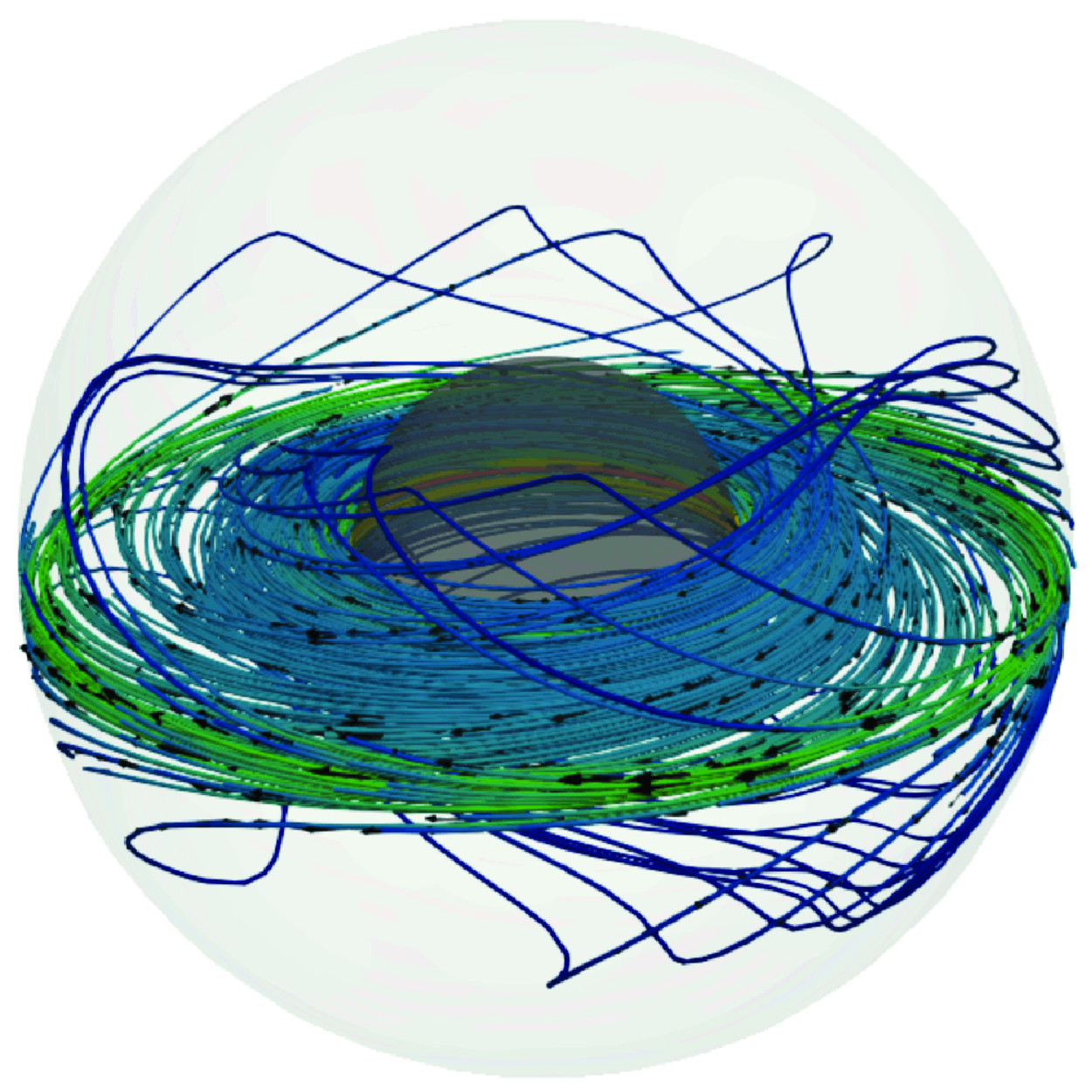Refine listing
Actions for selected content:
1418921 results in Open Access
Electromagnetically driven magnetized spherical Couette flow
-
- Journal:
- Journal of Fluid Mechanics / Volume 1015 / 25 July 2025
- Published online by Cambridge University Press:
- 16 July 2025, A25
-
- Article
- Export citation
Swimming and mixing of an ellipsoidal squirmer in a viscoplastic fluid
-
- Journal:
- Journal of Fluid Mechanics / Volume 1015 / 25 July 2025
- Published online by Cambridge University Press:
- 16 July 2025, A12
-
- Article
-
- You have access
- Open access
- HTML
- Export citation
John James Quinn. Majority State Ownership of Oil and Mining Sectors in Africa: The Resource Curse Undermined. London: Routledge, 2024. xiv + 186 pp. $200.00. Hardback. ISBN: 9781138390331.
-
- Journal:
- African Studies Review , First View
- Published online by Cambridge University Press:
- 16 July 2025, pp. 1-2
-
- Article
-
- You have access
- HTML
- Export citation
“A Bold Experiment in the Technique of Administration”: Nutrition Science and Development in the Gambia, 1946–50
-
- Journal:
- Journal of British Studies / Volume 64 / 2025
- Published online by Cambridge University Press:
- 16 July 2025, e16
-
- Article
-
- You have access
- Open access
- HTML
- Export citation
Supreme Prejudice: Examining the Supreme Court’s Racial & Criminal Biases
-
- Journal:
- Journal of Race, Ethnicity and Politics / Volume 10 / Issue 3 / November 2025
- Published online by Cambridge University Press:
- 16 July 2025, pp. 791-813
-
- Article
-
- You have access
- Open access
- HTML
- Export citation
Gender and Australian school leaders’ experiences of workplace violence by students, parents, and colleagues
- Part of
-
- Journal:
- The Economic and Labour Relations Review ,
- Published online by Cambridge University Press:
- 16 July 2025, pp. 1-20
-
- Article
-
- You have access
- Open access
- HTML
- Export citation
Revisiting the hydrodynamic modulation of short surface waves by longer waves
-
- Journal:
- Journal of Fluid Mechanics / Volume 1015 / 25 July 2025
- Published online by Cambridge University Press:
- 16 July 2025, A20
-
- Article
-
- You have access
- Open access
- HTML
- Export citation
Bucking the Buck: US Financial Sanctions & the International Backlash against the Dollar. By Daniel McDowell. New York: Oxford University Press, 2023. 238p.
-
- Journal:
- Perspectives on Politics / Volume 23 / Issue 3 / September 2025
- Published online by Cambridge University Press:
- 16 July 2025, pp. 1196-1197
- Print publication:
- September 2025
-
- Article
- Export citation
Streaming and diffusion in the cochlea
-
- Journal:
- Journal of Fluid Mechanics / Volume 1015 / 25 July 2025
- Published online by Cambridge University Press:
- 16 July 2025, A15
-
- Article
- Export citation
The Collaborative Innovation Effect of ESG Signals: Integrating Signaling and Trust Theories
-
- Journal:
- Management and Organization Review / Volume 21 / Issue 1 / February 2025
- Published online by Cambridge University Press:
- 15 July 2025, pp. 73-101
-
- Article
- Export citation
MOR volume 21 issue 1 Cover and Front matter
-
- Journal:
- Management and Organization Review / Volume 21 / Issue 1 / February 2025
- Published online by Cambridge University Press:
- 15 July 2025, pp. f1-f3
-
- Article
-
- You have access
- Export citation
DEGENERATIONS OF ORBIFOLD CURVES AS NONCOMMUTATIVE VARIETIES
- Part of
-
- Journal:
- Nagoya Mathematical Journal , First View
- Published online by Cambridge University Press:
- 15 July 2025, pp. 1-19
-
- Article
-
- You have access
- Open access
- HTML
- Export citation
An Exploratory 12-Month Observational Study of Adults with Spinal Muscular Atrophy: Learning From Our Tools
-
- Journal:
- Canadian Journal of Neurological Sciences , First View
- Published online by Cambridge University Press:
- 15 July 2025, pp. 1-10
-
- Article
-
- You have access
- Open access
- HTML
- Export citation
Complications of Middle Meningeal Artery Embolization for Chronic Subdural Hematoma: A Systematic Literature Review
-
- Journal:
- Canadian Journal of Neurological Sciences , First View
- Published online by Cambridge University Press:
- 15 July 2025, pp. 1-11
-
- Article
- Export citation
Excavating Alcatrazes, Santiago Island, Cape Verde: early colonial impacts on land, people and material culture
-
- Journal:
- Antiquity , First View
- Published online by Cambridge University Press:
- 15 July 2025, pp. 1-9
-
- Article
-
- You have access
- Open access
- HTML
- Export citation
Genetic variation and population structure of Haemonchus contortus: an in-silico analysis
-
- Journal:
- Journal of Helminthology / Volume 99 / 2025
- Published online by Cambridge University Press:
- 15 July 2025, e78
-
- Article
- Export citation
Otolaryngology Residents’ Perceptions of Pregnancy and Parental Leave During Training
-
- Journal:
- The Journal of Laryngology & Otology / Volume 139 / Issue 10 / October 2025
- Published online by Cambridge University Press:
- 15 July 2025, pp. 903-908
- Print publication:
- October 2025
-
- Article
-
- You have access
- Open access
- HTML
- Export citation
Mechanisms underlying the generation and generalisation of the surface layer – ERRATUM
-
- Journal:
- Journal of Fluid Mechanics / Volume 1014 / 10 July 2025
- Published online by Cambridge University Press:
- 15 July 2025, E3
-
- Article
-
- You have access
- Open access
- HTML
- Export citation
Comparisons of variances through the probabilistic mean value theorem and applications
- Part of
-
- Journal:
- Advances in Applied Probability , First View
- Published online by Cambridge University Press:
- 15 July 2025, pp. 1-32
-
- Article
-
- You have access
- Open access
- HTML
- Export citation
Notwithstanding Centralism: The Resurgence of the Notwithstanding Clause and the Conservative Provincial Rights Movement – ADDENDUM
-
- Journal:
- Canadian Journal of Political Science/Revue canadienne de science politique / Volume 58 / Issue 3 / September 2025
- Published online by Cambridge University Press:
- 15 July 2025, p. 538
-
- Article
-
- You have access
- Open access
- HTML
- Export citation






